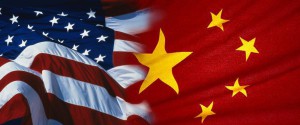This is the second article in a seven-part series examining America’s future strategic options toward China. The first looked at confrontation. This piece considers the strategy of enhanced balancing.
How viable is enhanced balancing?
As with confrontation, the future adoption of enhanced balancing faces substantial hurdles. If, as some commentators maintain, America has entered a new era of austerity – one marked by stifling partisanship in Washington, less public support for international engagement, resource constraints, and a dwindling share of the pie for defence expenditures- the political and economic capacity required for a sturdy response to China’s ascent will be in short supply. Nor is there any indication that the United States will soon have ideal strategic leeway for focusing on China; hopes for a lighter military footprint in the Middle East and Europe have been repeatedly dashed and persistent turmoil in those regions will serve as the most likely spoiler to deeper engagement across the Pacific. Moreover, while not a radical policy option like confrontation requiring a shocking catalyst for adoption, enhanced balancing would sharply escalate tensions with Beijing and close off many avenues for interaction, an unpalatable outcome that any U.S. administration would have to weigh against perceived benefits.
Yet it is not at all inconceivable to envision a future administration taking such a risk. Indeed, President Obama’s November 2011 announcement of a “pivot” of America’s diplomatic, economic, and military resources to Asia after a decade of draining war in the Middle East could be interpreted as a sign that U.S. leaders are already moving in this direction. Both in terms of its intentions, which remain murky and therefore open to alarmist interpretations, and its military and economic capacities, which are steadily growing, China is increasingly regarded by the U.S. foreign policy establishment as an adversarial actor.
Historic practice, economic recovery, and manoeuvring by political elites at home could guide America’s China policy in a firmer direction over time. By tradition, the United States has not tolerated the emergence of peer competitors. Since its ascendance to world power status at the end of the nineteenth century, it has not shied away from countering authoritarian states (Wilhelmine Germany, Nazi Germany, Imperial Japan, the Soviet Union) that aspired to hegemony in their own neighbourhoods. Should China continue pressing its various sovereignty claims in the South and East China Seas and limiting U.S. operations in the Western Pacific, enhanced balancing will gain more converts.
While a fiscally and politically hobbled America unable to defend its far-flung interests is a distinct possibility, so too is one that is economically rejuvenated, whose proven capacity for self-correction and inbuilt advantages in resources, competitiveness, and scientific research and technology are augmented by the attainment of energy independence. With the wind in its sails, an empowered America might be unable to resist the temptation to restrain China by flexing its muscles via a military build-up in East Asia.
In a heated political climate that has often been conducive to threat inflation, America’s party leaders may come to see mutual advantage in calling for a mobilization of greater resources to counter China. The Cold War, fueled and sustained for so long by the efforts of Republicans to brand their opponents as “soft” on communism and the defensive attempts by Democrats to burnish their anti-Soviet credentials, serves as an informative precedent. American voters, many of whom have long blamed job losses and trade deficits on unfair Chinese economic practices, might eventually be swayed by an alarmist narrative portraying the PRC as a threat to U.S. security. Indeed, the containment of China could potentially serve as a useful, much needed catalyst for clarifying America’s global role by harmonizing the two political parties’ foreign policy agendas, which have been at loggerheads since the demise of the Soviet Union.
Part III of this series will examine the strategic option of containment and engagement.




